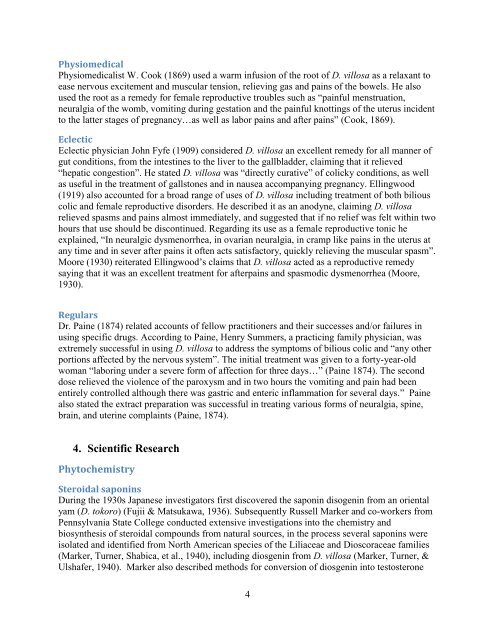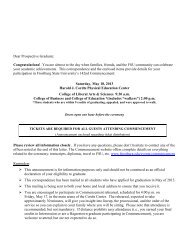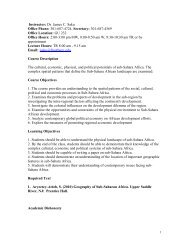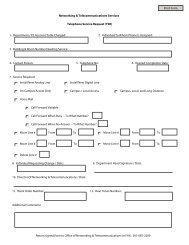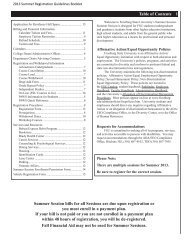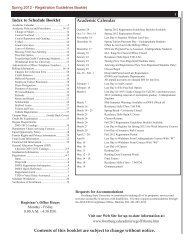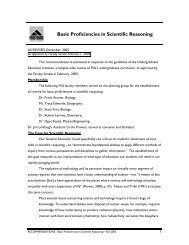WILD YAM Dioscorea villosa L - Frostburg State University
WILD YAM Dioscorea villosa L - Frostburg State University
WILD YAM Dioscorea villosa L - Frostburg State University
Create successful ePaper yourself
Turn your PDF publications into a flip-book with our unique Google optimized e-Paper software.
Physiomedical<br />
Physiomedicalist W. Cook (1869) used a warm infusion of the root of D. <strong>villosa</strong> as a relaxant to<br />
ease nervous excitement and muscular tension, relieving gas and pains of the bowels. He also<br />
used the root as a remedy for female reproductive troubles such as “painful menstruation,<br />
neuralgia of the womb, vomiting during gestation and the painful knottings of the uterus incident<br />
to the latter stages of pregnancy…as well as labor pains and after pains” (Cook, 1869).<br />
Eclectic<br />
Eclectic physician John Fyfe (1909) considered D. <strong>villosa</strong> an excellent remedy for all manner of<br />
gut conditions, from the intestines to the liver to the gallbladder, claiming that it relieved<br />
“hepatic congestion”. He stated D. <strong>villosa</strong> was “directly curative” of colicky conditions, as well<br />
as useful in the treatment of gallstones and in nausea accompanying pregnancy. Ellingwood<br />
(1919) also accounted for a broad range of uses of D. <strong>villosa</strong> including treatment of both bilious<br />
colic and female reproductive disorders. He described it as an anodyne, claiming D. <strong>villosa</strong><br />
relieved spasms and pains almost immediately, and suggested that if no relief was felt within two<br />
hours that use should be discontinued. Regarding its use as a female reproductive tonic he<br />
explained, “In neuralgic dysmenorrhea, in ovarian neuralgia, in cramp like pains in the uterus at<br />
any time and in sever after pains it often acts satisfactory, quickly relieving the muscular spasm”.<br />
Moore (1930) reiterated Ellingwood‟s claims that D. <strong>villosa</strong> acted as a reproductive remedy<br />
saying that it was an excellent treatment for afterpains and spasmodic dysmenorrhea (Moore,<br />
1930).<br />
Regulars<br />
Dr. Paine (1874) related accounts of fellow practitioners and their successes and/or failures in<br />
using specific drugs. According to Paine, Henry Summers, a practicing family physician, was<br />
extremely successful in using D. <strong>villosa</strong> to address the symptoms of bilious colic and “any other<br />
portions affected by the nervous system”. The initial treatment was given to a forty-year-old<br />
woman “laboring under a severe form of affection for three days…” (Paine 1874). The second<br />
dose relieved the violence of the paroxysm and in two hours the vomiting and pain had been<br />
entirely controlled although there was gastric and enteric inflammation for several days.” Paine<br />
also stated the extract preparation was successful in treating various forms of neuralgia, spine,<br />
brain, and uterine complaints (Paine, 1874).<br />
4. Scientific Research<br />
Phytochemistry<br />
Steroidal saponins<br />
During the 1930s Japanese investigators first discovered the saponin disogenin from an oriental<br />
yam (D. tokoro) (Fujii & Matsukawa, 1936). Subsequently Russell Marker and co-workers from<br />
Pennsylvania <strong>State</strong> College conducted extensive investigations into the chemistry and<br />
biosynthesis of steroidal compounds from natural sources, in the process several saponins were<br />
isolated and identified from North American species of the Liliaceae and Dioscoraceae families<br />
(Marker, Turner, Shabica, et al., 1940), including diosgenin from D. <strong>villosa</strong> (Marker, Turner, &<br />
Ulshafer, 1940). Marker also described methods for conversion of diosgenin into testosterone<br />
4


